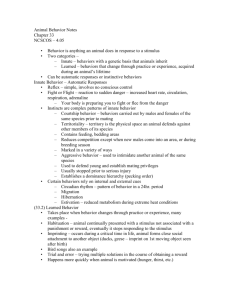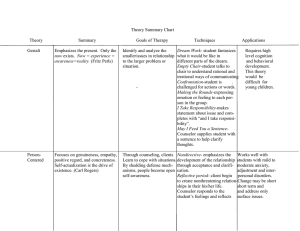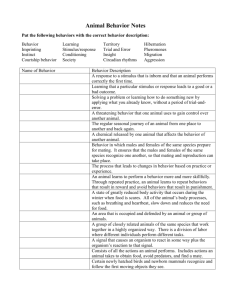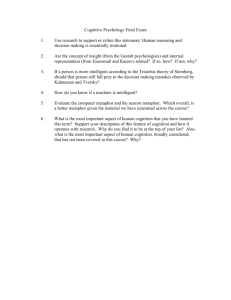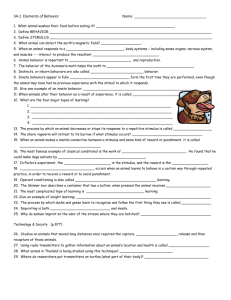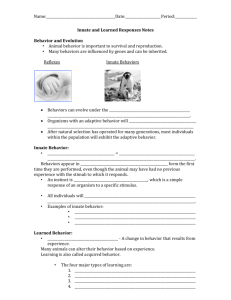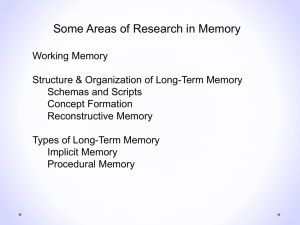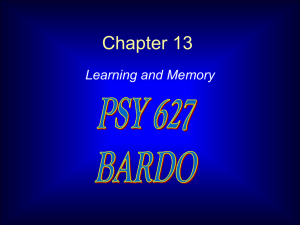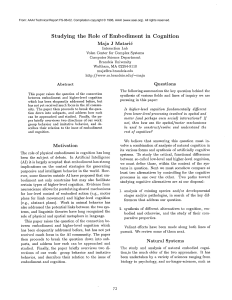Chapter 1 Notes - Social Circle City Schools
advertisement
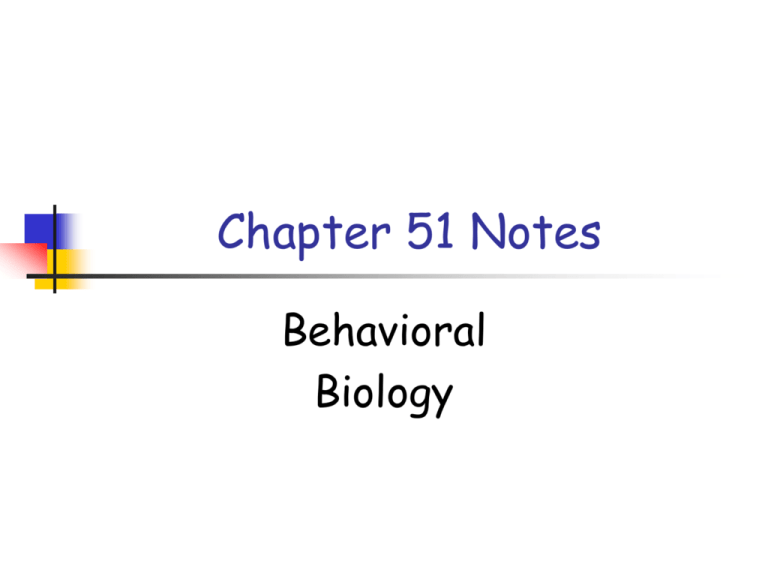
Chapter 51 Notes Behavioral Biology Introduction to Behavior Behavior: what an animal does and how it does it Behavior can result from both genes and environmental factors - not nature vs. nurture -still some behaviors are innate ex. young birds begging for food Introduction to Behavior Behavioral biology is connected to ethology: the study of animal behavior in natural conditions - Fixed action pattern: behavioral acts that is unchangeable and carried to completion - sometimes triggered by a sign stimulus Introduction to Behavior Introduction to Behavior Introduction to Behavior Behavioral ecology views behavior as an evolutionary adaptation - natural selection will favor behavior patterns that enhance survival ex. foraging: mechanisms to recognize, search for, and capture food Learning Learning is the modification of behavior resulting from specific experiences. - most innate behaviors improve with performance Modification is when behaviors change because of ongoing developmental changes Learning Habituation: type of learning that involves a loss of responsiveness to stimuli that convey little or no information - ex. the “cry-wolf” effect Learning Imprinting is a type of learning that is limited to a specific time period in an animal’s life and that is irreversible. Time of learning is called the sensitive period. - ex. mother-offspring bonding Learning Learning Learning Many animals can learn to associate one stimulus to another Associative learning: the connecting of one stimulus to another - ex. Pavlov’s dog Classical conditioning: involves learning to associate an arbitrary stimulus with a reward or punishment Learning Operant conditioning: trial-and-error learning. Animals learn to associate one of its behaviors with a reward or punishment Learning Animal Cognition Cognition: the ability of an animal’s nervous system to perceive, store, process, and use information gathered by sensory receptors. Animal Cognition Animals use various cognitive mechanisms during movement Kinesis: a simple change in activity or turning rate in response to a stimulus Taxis: an automatic movement toward or away from a stimulus Animal Cognition Honey bees use a cognitive map made up of several landmarks to help them locate their hive and flowers. Migration, or the regular movement over long distances, is an advanced form of cognition Animal Cognition Animal Cognition
